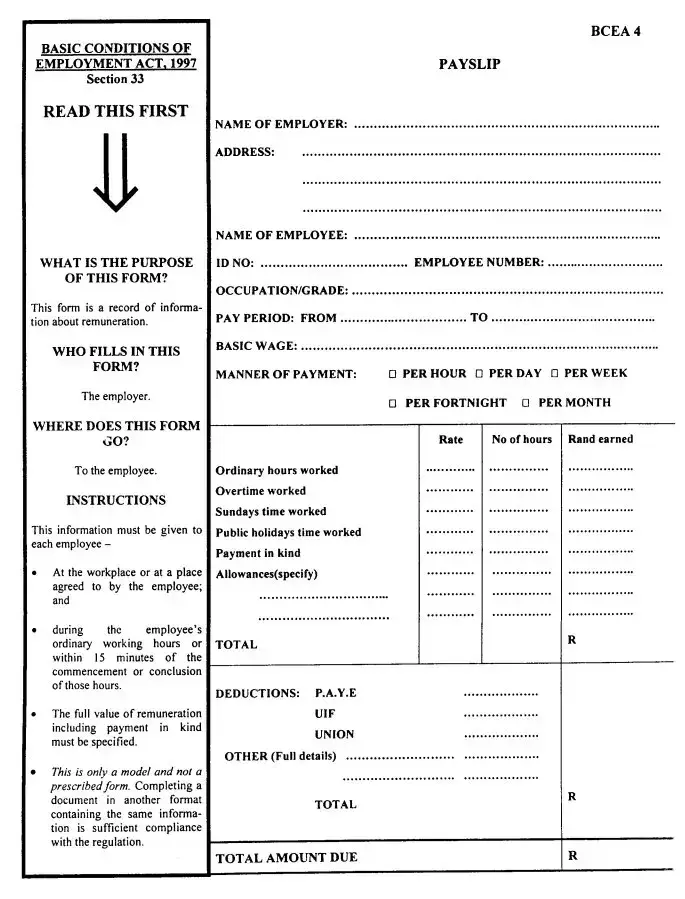Blank Payslip Bcea4 PDF Template
The Payslip Bcea4 form is an essential document under the Basic Conditions of Employment Act, 1997 (BCEA), specifically outlined in Section 33. It serves as an official record of remuneration details provided by the employer to the employee, ensuring transparency in the presentation of wages, benefits, and any deductions. This form, aimed at facilitating clarity and compliance with employment regulations, must be completed by the employer and given to the employee, embodying a critical aspect of employment documentation.
To streamline the payroll process and uphold legal compliance, filling out the Payslip Bcea4 form accurately is paramount. Click the button below to get started on this important aspect of employment documentation.
Make This Document Now

